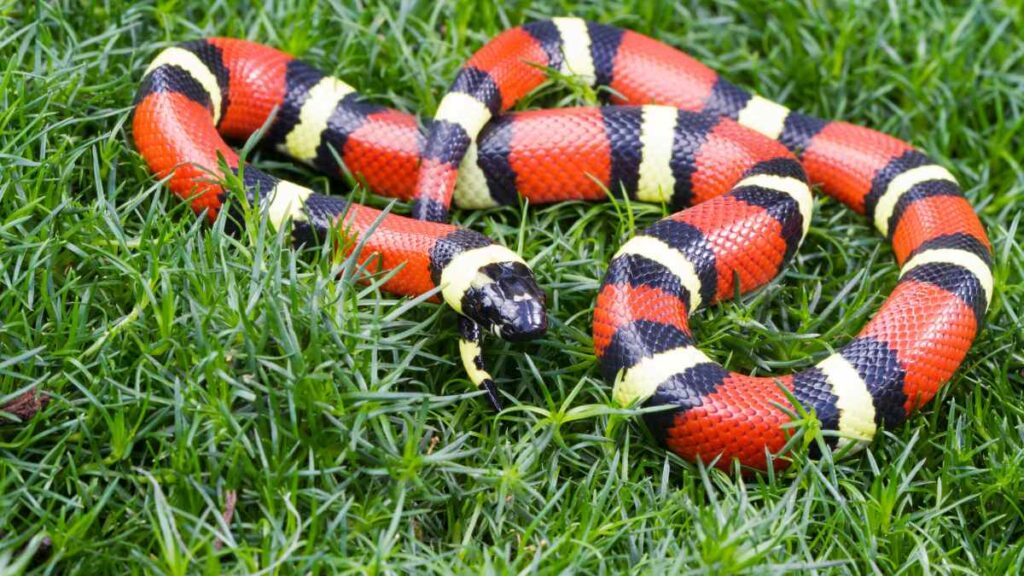Are you considering getting a pet snake but not sure where to start? Milk snakes are a popular choice for beginners due to their docile nature and ease of care. Milk snakes are a subspecies of kingsnake, with about 25 different variations found in the wild. These snakes vary in size, color, and pattern, but all have a gentle temperament, making them great pets for beginners.

Milk snakes are non-venomous and harmless to humans, making them a safe choice for those new to snake ownership. They typically grow to be between two and six feet long, with most subspecies averaging around three to four feet. While they do require a specific habitat and diet, the steps for taking care of milk snakes are relatively simple and easy to follow. With proper care, milk snakes can live up to 20 years in captivity, providing you with a long-term, low-maintenance pet.
If you’re considering getting a pet snake and are a beginner, milk snakes are a great option to consider. Their easy-going nature and simple care requirements make them a popular choice for those new to snake ownership. With the right care, your milk snake can be a friendly and fascinating addition to your household for years to come.
Basic Care Requirements
Milk snakes are great pets for beginners, as they are easy to take care of and have engaging personalities. However, like all pets, they require proper care and attention to thrive.
Habitat and Enclosure
When setting up your milk snake’s enclosure, you will need a tank or cage that is at least 20 gallons in size. The enclosure should have a secure lid to prevent escape and provide hiding spots such as wood or rocks. Aspen shavings or similar substrates should be used for bedding.
Temperature and Humidity
Milk snakes are cold-blooded and require a heat source such as a heat mat or lamp to maintain proper temperature. A thermostat should be used to regulate the temperature and prevent overheating. Humidity levels should be maintained at 40-60% and can be increased by misting the enclosure or providing a water bowl.
Diet and Feeding
Milk snakes primarily eat rodents such as rats and mice. Prey should be appropriately sized for the snake and offered once a week. Clean water should always be available, and the enclosure should be cleaned regularly to prevent the buildup of bacteria and dust.
Health and Hygiene
Regular cleaning and proper hygiene are essential for your milk snake’s health. The enclosure should be cleaned at least once a week, and any feces or uneaten prey should be removed promptly. If you notice any signs of illness, such as lethargy or loss of appetite, consult a veterinarian who specializes in reptiles.
-

Beaded Dragon Fan Exclusive: ‘Original Hipster’ T-Shirt – Wear Your Unique Style with Pride – Unisex t-shirt
£13.00 – £20.50 Select options This product has multiple variants. The options may be chosen on the product page -

Chinese Water Dragon Aquatic Mastery Tee: Dive into Elegance with Our Exclusive Reptile Enthusiast Shirt – Unisex t-shirt
£13.00 – £20.50 Select options This product has multiple variants. The options may be chosen on the product page
Handling and Behavior
Milk snakes are docile and generally easy to handle. However, they can become stressed if handled too much or too roughly. It is essential to build trust with your milk snake by handling them gently and regularly. If you are unsure about handling your snake, consult with a professional.
Appearance and Lifespan
Milk snakes come in a variety of colors and patterns, such as red, light, yellow, and black rings or yellow bands. They can grow up to 4-6 feet in length and live up to 20 years in captivity.
Breeding and Life Cycle
Milk snakes reach sexual maturity at around 2-3 years of age and can lay up to 20 eggs at a time. Hatchlings are typically 8-12 inches long and can be raised on a diet of appropriately sized pinky mice.
Safety and Precautions
Milk snakes are non-venomous and generally safe to handle. However, it is essential to wash your hands thoroughly after handling them and avoid handling them if you are sick or have any open wounds.
Choosing a Milk Snake
When choosing a milk snake, research the different subspecies and their specific care requirements. Look for a healthy snake with clear eyes and smooth skin.
Milk Snake vs Other Snakes
Compared to other snakes, milk snakes are quieter and tend to be more active. They are also easier to handle and require less complex care.
Milk Snakes in the Wild vs Captivity
In the wild, milk snakes are found in woodlands and grasslands throughout North and Central America, including Mexico. In captivity, they can adapt well to new environments and are popular among pet owners.
Common Questions About Milk Snakes
Some common questions about milk snakes include their diet, lifespan, and care requirements. It is essential to research and understand these aspects before adopting a milk snake.
That’s all for the basic care requirements of milk snakes! Remember to provide your pet with proper care and attention to ensure a happy and healthy life.
